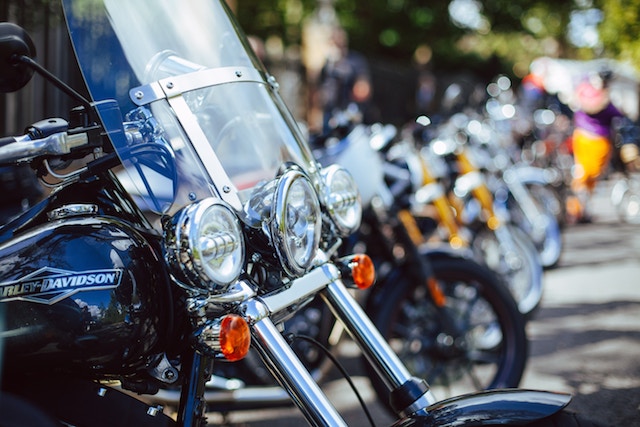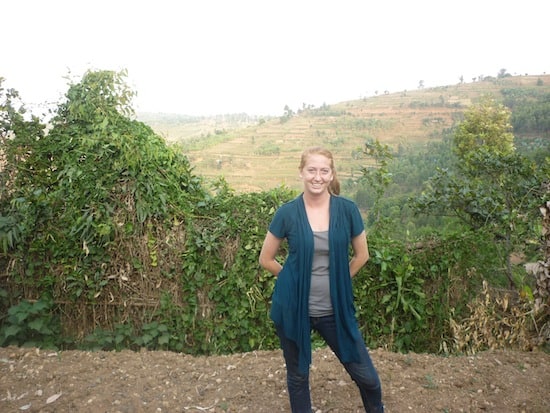What to Know Before You Take a Moto Taxi


When I first arrived in Rwanda I had never been on a motorcycle before and was, as a consequence, terrified. My parents, who both work in insurance, were all too familiar with the dangers of motorcycles and all too eager to pass their fears onto me. Certain obstacles just need to be conquered in this job though, and I wasn’t about to trek over 2 hours every time I needed to leave my village. So I have mastered the moto and I can honestly say now that I love it!

Here are a few pointers about riding one and selecting a good one, and general safety tips for all those motorcycle novices who may find themselves in the land of a thousand hills in need of a lift:
What to Know Before You Take a Moto Taxi
1. Take only licensed moto taxis.
Many people have their own bikes and will offer you a lift for cash. You can tell which ones are official taxis because the drivers will be wearing a vest over their clothing, which say the city’s name on the back and usually either MTN or TIGO, the two cell phone providers, on the front.
2. Use the helmet.
You will see Rwandans ignoring this rule but I would advise always taking the helmet the motari (driver) offers; the roads can be bumpy and legally you can get fined for riding without one.
3. Hold on.
There is a small metal bar behind the seat where most people can hold onto and then comfortably lean back. You will see that Rwandans don’t hold onto anything but that still scares me. Also, personal space is a non-issue in Rwandan culture; if you feel safer holding onto the driver they will have no problem with it.
4. Don’t worry about how close you are to the driver.
Again, personal space doesn’t exist here. As a Westerner your natural reaction will be to keep your distance and try to avoid sliding forward into the driver (there is nothing separating the two seats) and I would advise you ignore that desire. Firstly, you will not be able to prevent yourself from sliding into the driver; they don’t call Rwanda “the land of a thousand hills,” for nothing. Secondly, it will tire you out and long trips can be quite an ab workout already. Lastly, the driver will think the effort you are putting into avoiding contact is weirder than the actual contact. It’s awkward, believe me, I know, but embrace it; will make moto travel so much easier.
5. Don’t feel bad asking to stop.
I still do this all the time to adjust my pack or take a breath or because my thighs are cramping. Just tap the driver on his shoulder and ask to stop. Most of the time they will know the word in English but in Kinyarwanda you say, “Hagaruka.”
How to pick a driver:
There’s not really a science to picking a driver but I stick to these basics when I’m away from my home and need to rely on someone I don’t know.
1. Price.
Try and ask a local first how much the ride should cost, I always go with the driver who quotes a price that is closest to the accurate price and is not trying to rip me off for being white.
2. Gas.
Take a peak at the gas tank meter. Stopping at gas stations, or as I’ve experienced, bars along the way where there’s a jerry can full of petrol, is awkward and unnecessary. So a full tank is a plus.
3. English.
Things can happen along the way while you’re traveling. I speak the local language well, but in an unfamiliar place I am always biased towards the drivers who speak some English.
4. Quality of the equipment.
It might not be a fair measure but I always look to see if the visor on the helmet or the rear-view mirrors is cracked or damaged, an indication that the bike has already been in an accident regardless of how long ago.
5. Size of the driver.
I always feel safer with a man who is larger than me at the wheel because I know that if I shift my body at the wrong moment his weight still cancels out mine. This logic can go the
opposite way too, however. If you really want to avoid contact or you have a lot of luggage, choose a smaller driver.
Finally, I suggest you throw in your headphones to your favorite music, put on your helmet, and enjoy the ride. Once you get the hang of them the motorcycle taxis are a really easy way to get around. Best of all, the views are often breathtaking. Safe travels!
Top photo by Unsplash.








